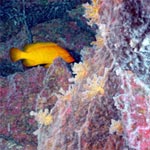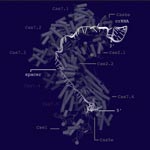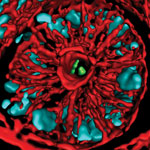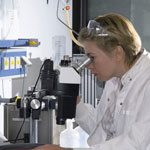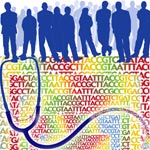Scott Poethig
Fields: Plant biology, cell and developmental biology, genetics
Works at: University of Pennsylvania
Studied at: College of Wooster, Yale University
Favorite musicians: Nick Drake and Bruce Springsteen
High school job: Radio D.J.
Favorite book: “The Little Prince,” by Antoine de Saint-Exupéry
When Scott Poethig signed up for a developmental biology course in his senior year of college, he expected to learn how organisms transition from single cells to juveniles to adults. He did not expect to learn just how much scientists still didn’t know about this process.
“It was the first course I had taken as an undergraduate where I felt that I could ask a question that there wasn’t an answer to already,” he recalls. “I thought, ‘Wow! This is amazing.’”
Poethig already had an interest in plant biology and an independent research project studying corn viruses. He immediately saw the potential in combining his knowledge of plants with his questions about how organisms grow. “There seemed to be a lot of low hanging fruit in plant development,” he says.
Today, Poethig is the head of a plant development lab at the University of Pennsylvania. His work probes the complex molecular mechanisms that drive the transition from a young seedling to an adult plant that hasn’t yet produced seeds.
“The analogous period in human development is the interval between birth and puberty,” he explains. “People think of puberty as the major developmental transition in postnatal human development, but a lot of change happens before that point.”
His Findings
Poethig discovered that for the mustard plant Arabidopsis, a model organism frequently studied by geneticists, change begins early. Before these plants begin to flower—a sign of reproductive maturity—they undergo a process of vegetative maturation. In Arabidopsis, Poethig found that juvenile plants can be distinguished from adult plants by where hairs are produced on a leaf. Juvenile plants only produce hairs on the upper surface of the leaf, whereas adult plants produce leaves with hairs on both the upper and lower surfaces.
By studying mutant Arabidopsis plants where the adult pattern of hair development is either delayed or advanced, Poethig identified microRNAs as key players in this developmental transition.
MicroRNA molecules commonly block the expression of specific genes. Poethig found that in Arabidopsis, a type of microRNA prevents development. Young plants have high levels of this microRNA and cannot fully mature. When those levels drop, plants progress to adulthood.
MicroRNAs similarly control development in the nematode C. elegans. Scientists study the genetics of this tiny worm to better understand related developmental processes in more complex organisms. Because plants also use microRNAs to regulate development, Poethig’s discoveries may contribute to our understanding of how these molecules govern development in animals, including humans.
Poethig now wants to learn what determines the timing of developmental changes. He asks: “Why do microRNA levels drop? What’s the signal that causes that? What is the plant measuring?” His current hypothesis: sugar.
In a recent study, he found that giving plants additional sugar reduced microRNA levels and sped up development. Meanwhile, mutant plants that couldn’t produce enough sugar on their own through photosynthesis had increased microRNA levels and delayed development compared to normal plants.
This research may one day advance our understanding of how nutrition and genetics interact to affect human development. “In essentially all organisms, aging and the timing of developmental processes are strongly affected by nutrition,” Poethig explains. “In humans, childhood obesity is sometimes associated with early puberty, and it is important to understand the molecular basis for this effect.”
Poethig believes that studying microRNAs in plants may also lead to discoveries in human genetics outside of developmental biology. “MicroRNAs control a wide range of gene activity in plants and animals,” Poethig explains. “In humans, these molecules control the activity of as many as 30 percent of our genes. So understanding how microRNAs work in plants could help us understand their function in humans.”
Besides studying the Arabidopsis plants in his lab, Poethig also studies the plants in his kitchen, and uses his fascination with the history, culture and politics of food to excite others about science. Watch video.
